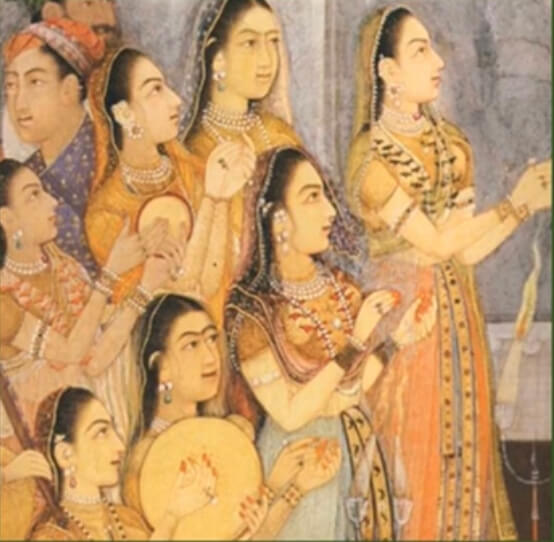Your cart is currently empty!

Raising the Veil on Harems
An inside look at these private spaces inhabited by women in the 16th, 19th and 20th centuries, through art.
By Preeti Philip
The richest empire in the world, Mughal India- said to be blessed by the divine light of the sun, was home to some of the most powerful women who resided in the royal harems of the empire, called the Zenana. During the Mughal era (16th-18thcentury) accomplished and cultured women were highly prized and held a high status in these royal harems. Reputed as being extremely well educated and refined, they were astute businesswomen who owned trading ships, had a keen eye for architecture, commissioned buildings, wrote biographies and poetry, travelled and were personally wealthy beyond compare.
The walls of the harem housed generations of women, elderly matrons, young wives, children, servants, widowed or divorced relatives and unmarried sisters. Not only were they responsible for the smooth running of the royal household, they also participated in matters concerning the empire and when the need arose these strong women accompanied their husbands and male relatives on horseback travelling great distances and facing many hardships.
However, life within the harem was also political. Rivalries and jealousies between the women could sometimes lead to stressful living conditions, and although they did live in extremely well-guarded parts of the palace cut off from male interaction it is a far cry from the oppressed, neglected mistresses and concubines living unfulfilled lives in suffocating spaces that have fired our imaginations for centuries. The Europeans, on their arrival in India were not familiar with the concept of these private spaces for women, neither were they familiar with the local languages or the subtle nuances of the culture. Their sources of information were mainly through interpreters, their own lens of Victorian morality and cheap bazaar gossip. Most accounts pandered to the European public’s need for gossip on the exotic east or a patronizing orientalism which considered the eastern cultures inferior and less civilized.
Comments
2 responses to “Raising the Veil on Harems”
I don’t think the title of your article matches the content lol. Just kidding, mainly because I had some doubts after reading the article.
Thanks for your feedback-much appreciated.

Leave a Reply